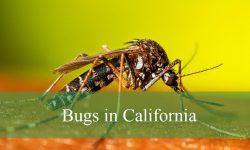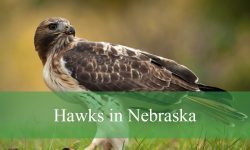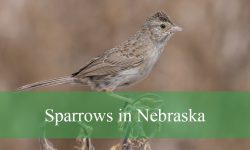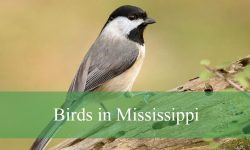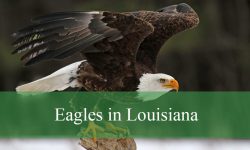The black with white striped wasp is a remarkable creature distinguished by its striking coloration. With a sleek black body adorned with bold white stripes, it commands attention wherever it goes. Despite its eye-catching appearance, this wasp often evokes fear due to misconceptions about its behavior. However, these insects play vital roles in pollination and pest control.
Different Types of Black with White Striped Wasps
Euodynerus Megaera
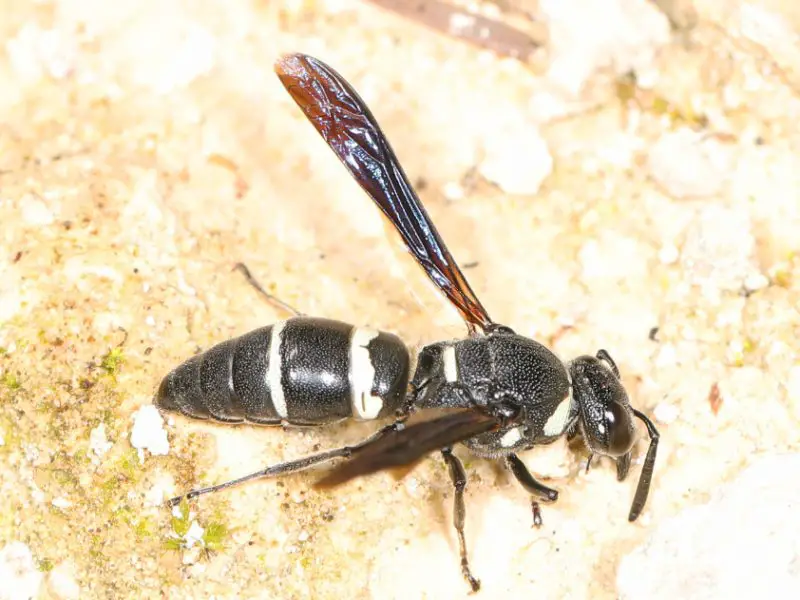
Euodynerus megaera is a lone wasp that is common in the Eastern and Northeastern United States. It has a black body with two white abdomen stripes and a characteristic central mark. It feeds on pollen and visits blooms such as Scarlet beebalm and aquatic milkweed, fulfilling its role as an essential pollinator. Being active during the day, it helps with pollination, which is essential to the ecology.
American Sand Wasp
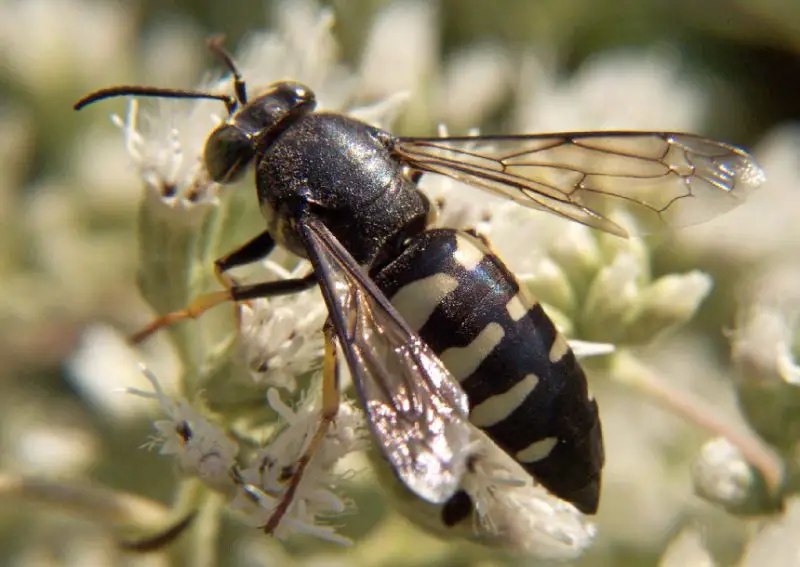
The American Sand Wasp, or Bembix americana, is a common species in both the US and Mexico, reaching a maximum size of 20 mm. It is distinguished by its huge compound eyes, black and white coloring, and black thorax and striped abdomen, which are all coated in short white hairs. Unlike other wasp species, they are less dangerous because they do not sting and do not have black wings.
Blackjacket
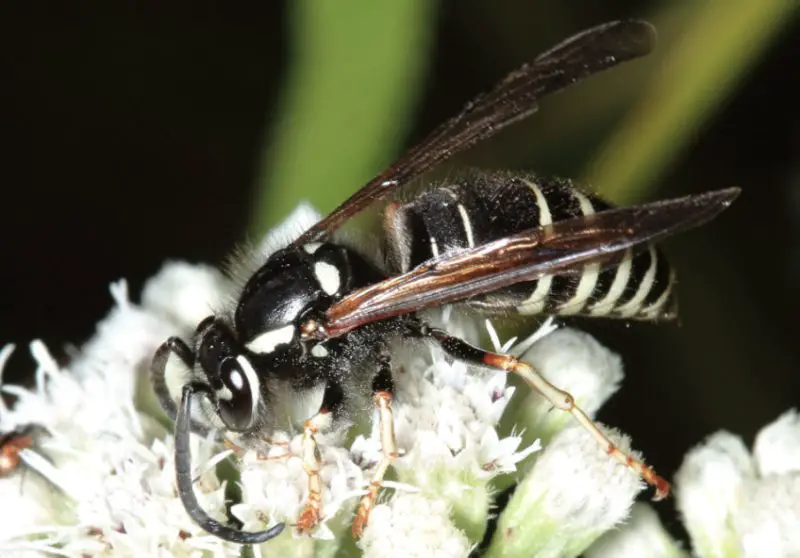
The only state in North America where blackjacket wasps (Vespula consobrina) are not present is Alaska. They have brown wings and reddish-brown legs with white markings on them. Their black bodies have white markings on the head, thorax, and abdomen. Their underground colonies are hierarchical and they behave aggressively, especially in big numbers. They can be dangerous to people who disturb their wooded habitats and may need to be hospitalized if they sting many times.
Euodynerus Bidens
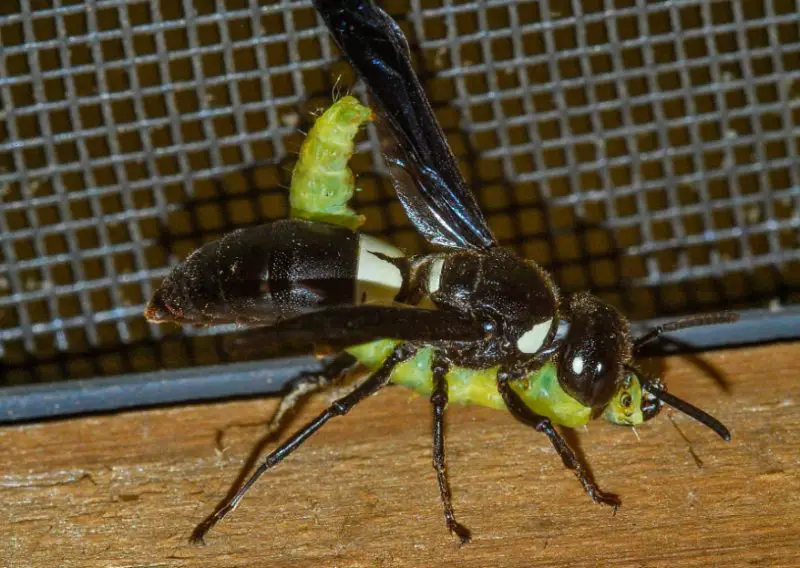
The Euodynerus bidens is a species that is primarily black in appearance with white markings near the eyes. Its thorax and abdomen have thick white stripes. Males reach about 14mm, while females develop up to 17mm with solid black wings with clear tips. The Southeastern United places is home to this species, especially places like Florida, Alabama, Mississippi, Louisiana, and Texas. It like to feed on Rue pollen and is commonly noticed in and around Jacksonville, Florida, as well as other states like Georgia and South Carolina. It is often seen on herbs.
Sabre Wasp
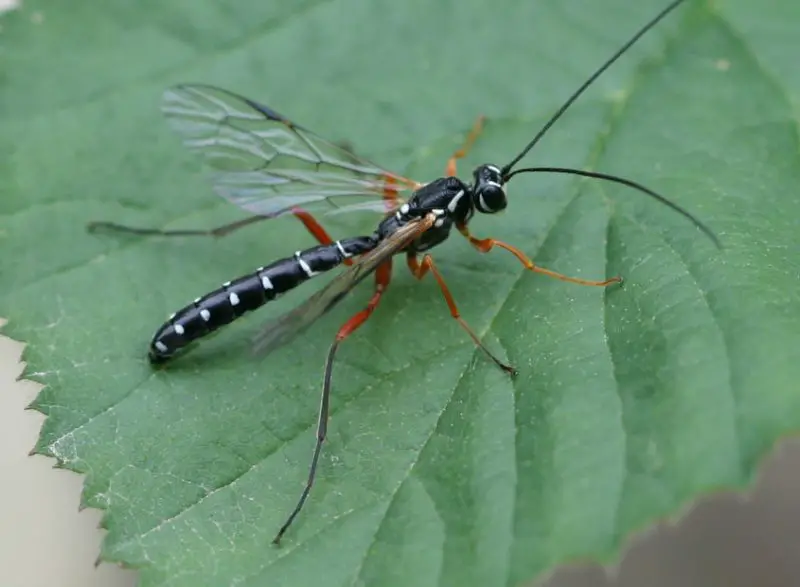
In July, sabre wasps (Rhyssa persuasoria), which are distinguished by their size and unique black and white bodies, begin to emerge. The larger females, up to 40mm, are dwarfed by the tiny males, which are just 10–20mm. Their legs are crimson and their abdomens are elongated; they live mostly in wooded areas in Europe and Oceania. Longhorn beetles are the target of the reproductive cycle of the females of this parasitic species.
Lemon Tree Borer Parasitoid Wasp
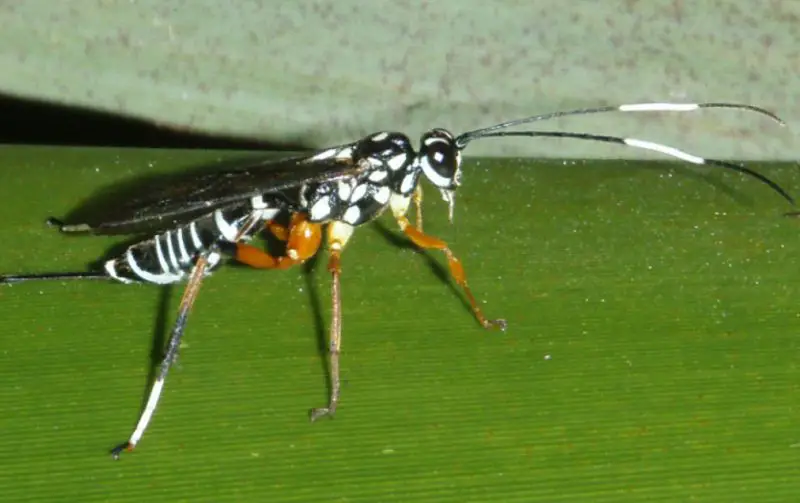
Worldwide, citrus plantations and vineyards are home to the parasitic wasp known as Xanthocryptus novozealandicus, or Lemon Tree Borer. It has a black body and white-striped antennae and head. It lays eggs in grubs and feeds on the larvae of tree borers. Originating in New Zealand, it migrated to Australia and New Guinea before being brought throughout the world on citrus shipments.
White-Banded Potter Wasp
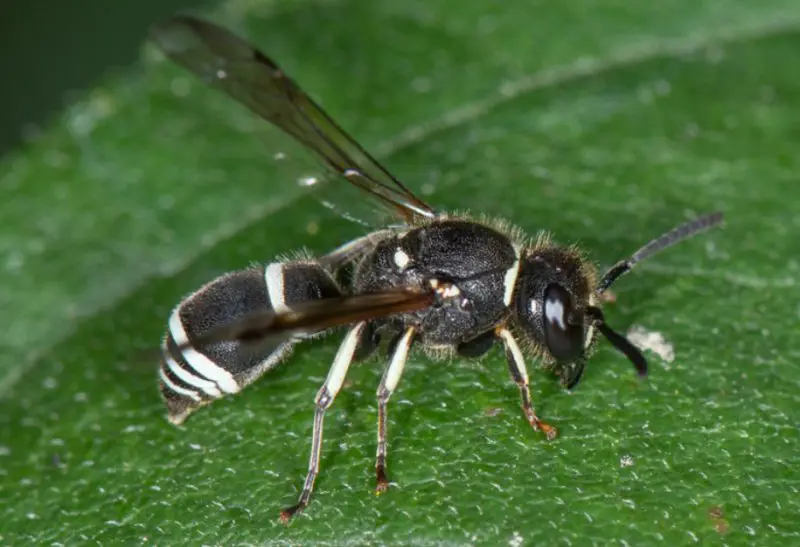
Ancistrocerus albophaleratus, also known as the White-Banded Potter Wasp, gets its name from three conspicuous white bands on the back of its abdomen, along with other markings on the head. It builds egg-laying mud pots and has smoky brown wings, yellow legs, and black and white coloring. To make these pots, females gather earth and water, mix it with the latter, and then seal the pots after laying an egg and adding a food source—usually caterpillars, beetle larvae, or spiders—to feed the developing larvae.
Glabridorsum Stokesii
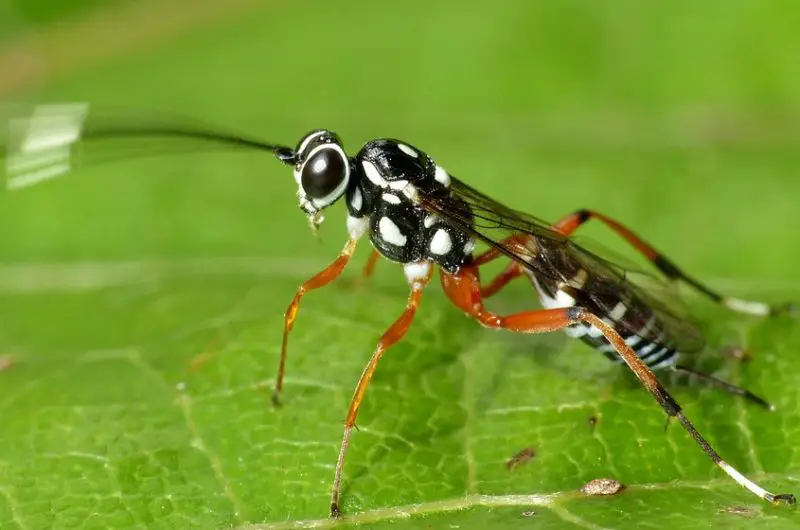
The parasite Glabridorsum stokesii is identified by its black and white coloring and reddish-brown legs. It can grow up to 10mm in size and has white bands on the abdomen, thoracic marks, and head stripes. It parasitizes species such as the Oriental fruit moth (Grapholita molesta) and the Brown-banded leafroller, which is beneficial for crops affected by fruit moths.
White-Trimmed Black Wasp
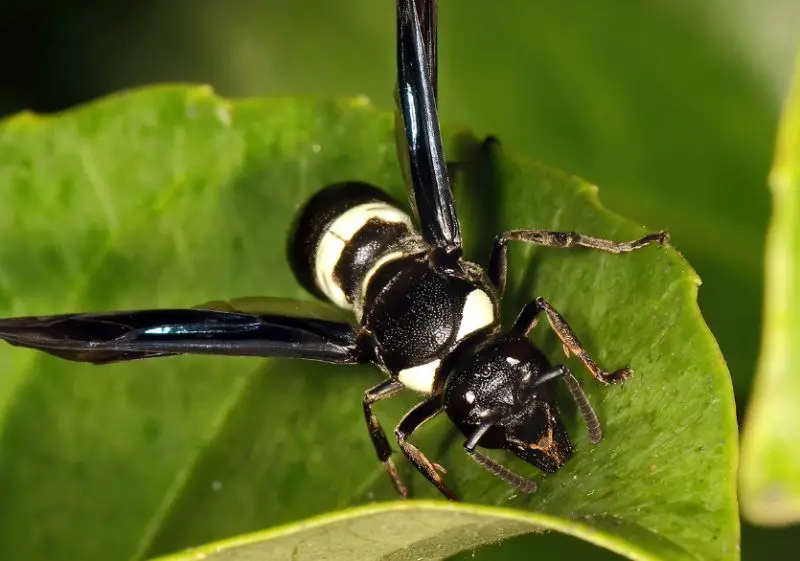
The abdomen, thorax, and head of the White-Trimmed Black Wasp (Episyron quinquenotatus) are primarily black, with two characteristic white lines encircling the eyes. Its legs, antennae, and wings are all black, and it uses black spines to help it burrow in sandy soil. It preys on spiders, paralyzing them with its stinger before pulling them into its underground burrow to be eaten. It is widespread throughout the United States.
Bald-Faced Hornet
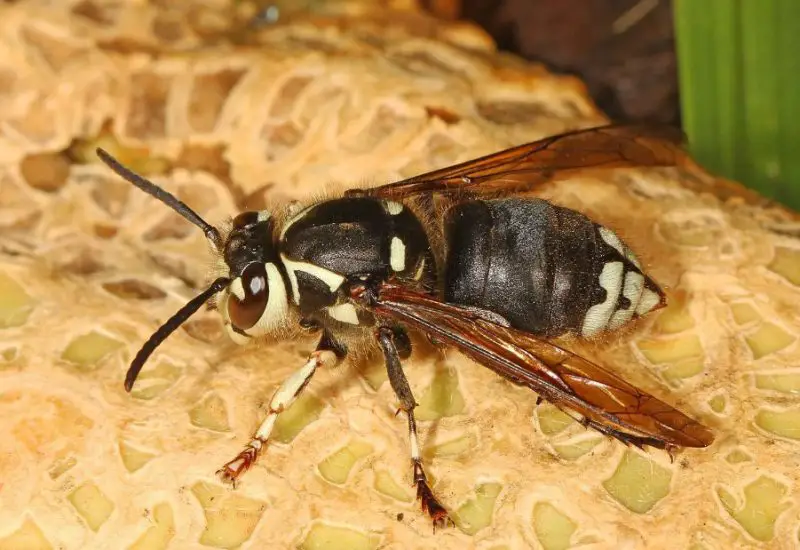
Bald-faced Hornets (Dolichovespula maculata) are recognizable wasps due to their black and white appearance, especially the white “bald” head that gave them their name. With their black stripes running horizontally across their abdomen, they build nests that resemble paper, usually above ground or affixed to buildings. Although they are not as violent as some other species of wasp, they nevertheless have a social structure headed by a queen who lays the majority of the eggs in the nest.
Four-Toothed Mason Wasp
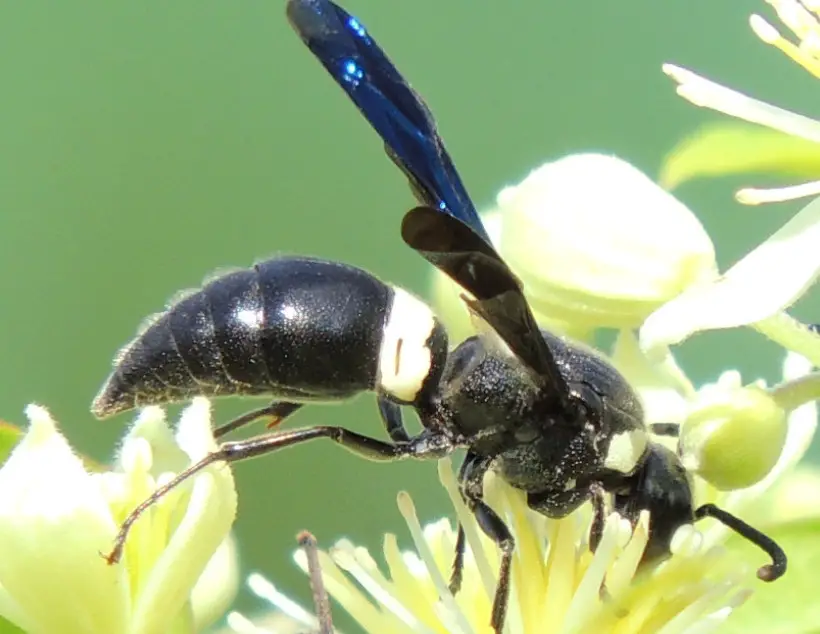
The body of the Four-Toothed Mason Wasp (Monobia quadridens) is primarily black with three conspicuous white stripes. These tall, black wasps have a minimum 14mm wingspan, giving them the appearance of enormous flies. Although stings are not poisonous, females carry one that can inflict severe agony, similar to that of a Bald-faced Hornet. Though common throughout the US, there is a large number of wasps in New Mexico.
Fraternal Potter Wasp
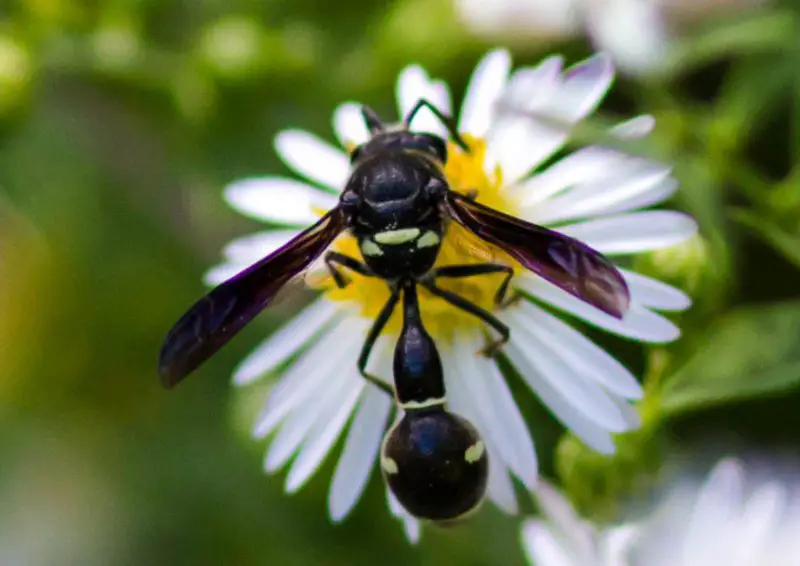
The skillful use of mud to construct safe nests for their eggs is a well-known trait of the Fraternal Potter Wasp (Eumenes fraternus). They are distinguished by their remarkable black and white-ivory coloring and their lengthy abdomen that widens toward the back. These wasps painstakingly build one mud pot at a time, containing an egg and either insects or insect larvae. Before the egg hatches, each pot must be built, which might take several hours from mixing the mud and water to sealing it.
Double-Banded Scoliid Wasp

Similar in appearance to the Mason wasp, the Double-Banded Scoliid Wasp (Scolia bicincta) has two characteristic white bands across its abdomen in addition to its black body. These useful insects are common in the northeastern United States and help in pollination by carrying pollen from flower to flower. Females are useful in gardens even though they have a retractable stinger. Comparatively speaking, they are larger than other species of black and white wasps, with a body length of 15 to 25 mm.
Pseudodynerus Quadrisectus
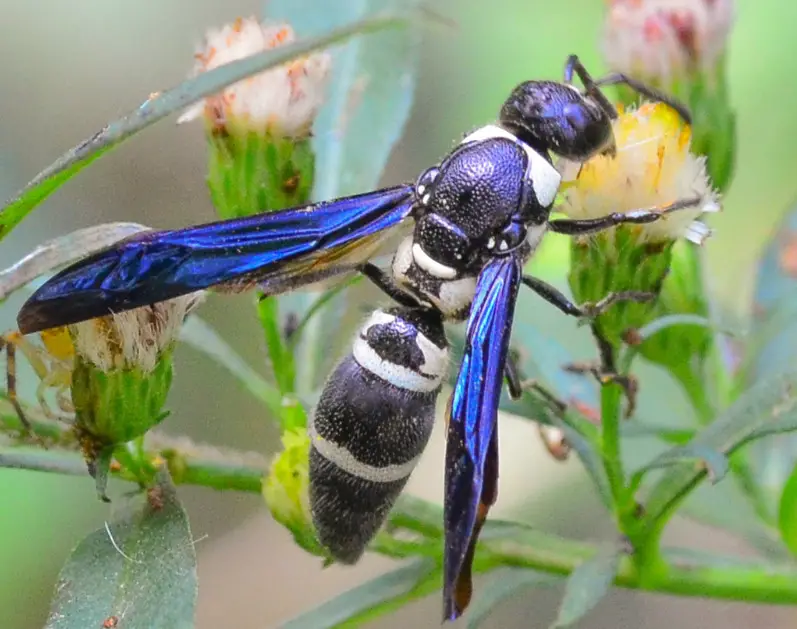
Pseudodynerus quadrisectus has a black body with four white lines adorning it. It is recognized by its unique black and white markings. Being solitary wasps, they don’t build nests and are rarely seen in packs. Often called mud wasps, they create tiny mud chambers to house their eggs and larvae. They add to the biodiversity of the Eastern states of the United States, where they are primarily found.
People Who Read This Also Read:

